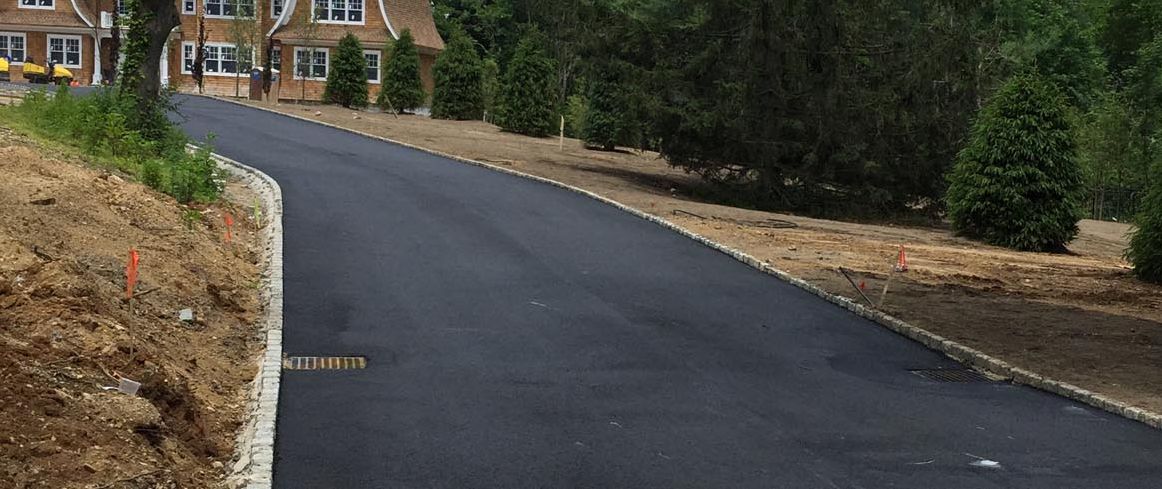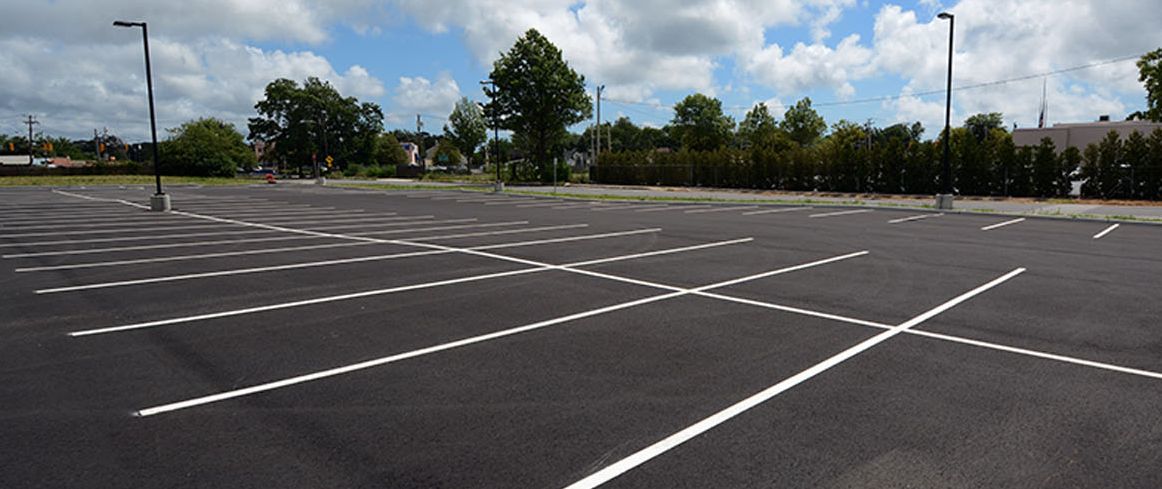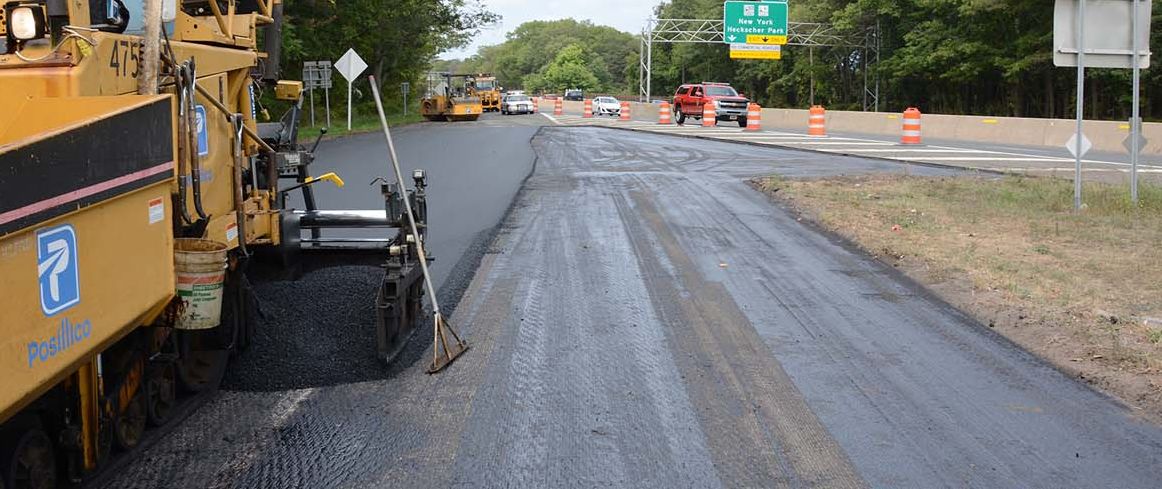

- In order to build a durable asphalt driveway several steps must be taken. First would be the sub-base. The types of material used for a sub-base vary by region but the most commonly used sub-base for laying an asphalt driveway is Recycled Concrete Aggregate (RCA). RCA allows for the proper compaction as well as enough drainage to prevent ice from forming and cracking the driveway. Recommended thickness for the RCA sub-base is 4-6 inches after the proper compaction is completed. Ideally, the sub-base should sit for 7-10 days to ensure natural settling and compaction.
- After the base is fully compacted, you are ready for asphalt. Depending on the amount of traffic and/or the size of the vehicles that will be driving on the surface, 2-3 inches of asphalt should then be laid. To ensure proper compaction of the blacktop, a roller weighing anywhere from 1 ton to 3 tons should be used.
- Finally, you must provide enough slope or pitch for draining water off and away from the driveway. Water should never be allowed to puddle on the surface because that will lead to a shorter surface life and increase the chance of the driveway cracking in the wintertime.
- The first step in building a lasting parking lot is to remove the existing blacktop.
- After that is complete and the old asphalt is disposed of properly (see section on Recycling Services), the contractor inspects the sub-base and determines whether or not it needs to be removed and replaced.
- If new sub-base is needed, 6 to 8 inches of R1 Type RCA will be installed and compacted.
- After the base is compacted and settled, 2 to 3 inches of Type 3 binder is laid and compacted.
- Following the installation of the binder, 1½ to 2 inches of Type 6 or Type 7 top is laid and compacted.
- The final step is the line striping.
- First, the contractor builds embankments using cuts and fills.
- Next, a grader or bulldozer levels the screened dirt and fills in dips to create a surface that will support a road for decades.
- After the ground is leveled, 6-8 inches of R1 type RCA is installed and compacted.
- During the next step, the contactor installs drains and sewers. The center of the road must be higher than the edges of the road in order for water to properly drain into the storm sewers. Drainage is a critical element because improper drainage will greatly reduce the new pavement's life expectancy.
- For lighter traffic roadways, 2-3 inches of Type 3 binder is laid and compacted followed by 1½ to 2 inches of Type 6 or Type 7 top.
- For heavy highways, 4 inches of Type 1 base is first laid, followed by 2-3 inches of Type 3 binder, finished off with 1 ½ to 2 inches of Type 6 or Type 7 top.
- Asphalt uses bitumen, a petroleum product, to glue together sand and crushed rock. This mixture is heated to approximately 300 degrees at the asphalt plant then it is trucked to the construction site where workers spread and compact the hot mixture onto the roadbed.
- All of this work must pass strict inspections before the project can continue.
MATERIALS
CALCULATOR
CALCULATOR
CHOOSE PRODUCT TYPE
ASPHALT
NON-ASPHALT
FEET
FEET
INCHES
CALCULATE
TOTAL CUBIC YARDS*
TOTAL TONS*
* The total above are for estimates only. Many factors can impact quantity.









